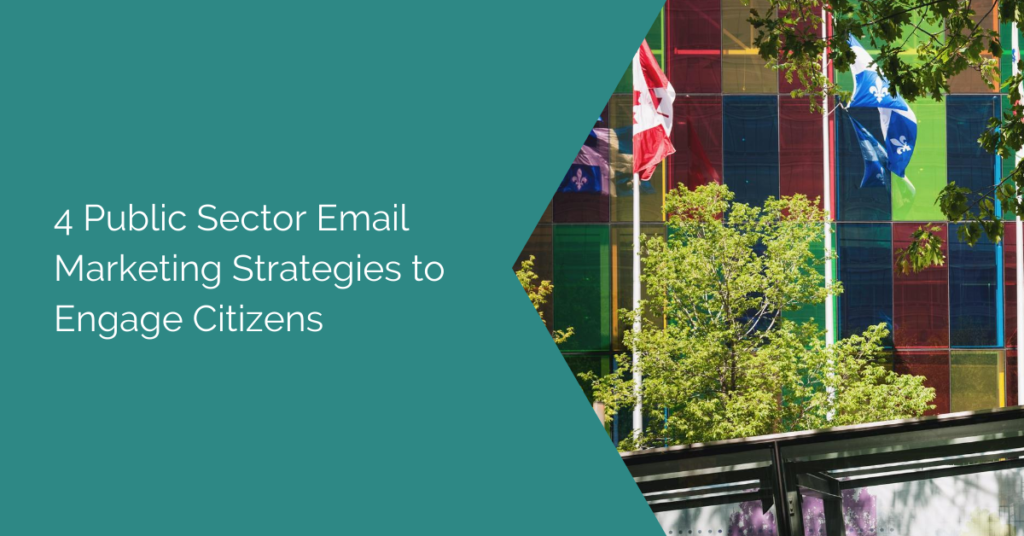If you manage public sector email marketing campaigns, it’s important to ensure you leverage the full potential of this powerful communications channel. On one hand, you’re responsible for using outbound channels to encourage civic engagement and share information. But this must be balanced against the need to manage your data securely and ensure it is handled properly. For most communicators, the email newsletter is a very effective tool for sharing information, asking for feedback, and educating the public. This guide will help you balance your responsibilities and priorities to ensure you get the full value from your public sector email marketing campaigns.
In this guide, we’ll discuss these topics:
- What is email marketing for the public sector?
- Why set up an email marketing strategy for the public sector?
- Public sector Vs. Private-sector email marketing
- 4 Benefits of public sector email marketing – examples included
- How to set up a public sector email campaign
Before we dive in, some communicators may be here in search of a better email marketing platform; something purpose-built to help communicators engage stakeholders and citizens without the feature bloat that comes with marketing software designed for sales. If this is you, consider a risk-free trial of Envoke. We’ve been helping municipalities, universities, school boards, and governments engage their stakeholders for almost 20 years and we understand your needs. Give us a try.
Try Envoke today: Create a free trial account.
Email for communication, not lead generation.
- Includes ALL Envoke features.
- No credit card needed for trial.
- Free, unlimited support.
- Free coaching call with tech support (not sales).
What is Email Marketing and Communications for the Public Sector?
Public sector email marketing involves institutions that deal with public healthcare, taxes, public schools, municipalities, and other government institutions., which is why email marketing in this field is not just about marketing. There is also a substantial communications piece, as many of the emails sent in the public sector are designed to inform citizens about their benefits, rights, and responsibilities and encourage civic engagement.
Why Set up an Email Marketing Strategy for the Public Sector?
1. Welcome new clients and citizens
Your welcome email is the first email your contacts will see after their first interaction with your institution. Whether they subscribed to your email list through the university’s website or visited your tax office last week. These messages are important. They confirm the individual’s subscription status while giving you the chance to introduce your services and encourage your new subscriber to engage with your institution.
Setting up a welcome email has other benefits, too. Running public sector email campaigns, starting with a welcome message, helps you set your users’ expectations, and make the relationship with the public smoother.
For instance, citizens feel a bit tense when interacting with their tax office or bank. Your public-sector welcome email can set up the tone of communication and put your readers at ease.
2. Deliver valuable information
Citizens often rely on the public sector to provide them with critical information concerning health and public safety. Keeping your audience informed strengthens the trust the public has toward your office or institution. The majority of public sector emails are informational messages, and many of them have a direct impact on people’s lives.
Setting up a public sector email marketing strategy helps you:
- Inform people about new policies.
- Share information about new regulations.
- Inform about upcoming important dates.
- Share health and safety information.
Plus, email marketing to the public sector is considered the cheapest channel for sharing information. Media, banners, and ads are considered pricey compared to what email marketing offers.
You can send emails to 50,000 email addresses for $634 CAD / month, using Envoke email software while keeping your data secure and stored in Canada.
3. Encourage actions and engagement
Email marketing is the most effective tool to encourage action and help a community achieve its goals by encouraging people to vote or to embrace public safety measures. Most public sector email examples contain a powerful Call-To-Action button that drives the public’s action.
Your CTA can be a simple message such as: “Read More.” Or you can choose a powerful phrase like: “Vote to shape the future.” Connect your email to your organization’s and craft a catchy CTA to drive the most interactions.
You can use the following techniques to increase the encouragement of your audience with CTAs:
- Create a sense of urgency
- Provide value
- Show benefits
A powerful CTA in a public sector email is not just a clickable box. It can actually drive behaviour and result in a more informed and engaged citizenry.
4. Introduce new programs and services
Public sector email marketing is an important way to launch new programs and services. Carefully consider the timing of your emails. When launching something completely new, you’ll want to give people plenty of time to take in the new information and consider their schedules. It’s also worthwhile to follow up after an initial announcement, to remind people of the new program’s upcoming start date. Remember, you can schedule your emails using Envoke and not worry about missing deadlines and critical dates.
5. Collect opinion and feedback
It may seem obvious, but good communication must be a two-way exchange. As a public service provider, you want to engage your intended audience, not just broadcast information at them. As mentioned already, public sector emails are for informing and engaging with people, not for selling and advertising.
Leveraging your email marketing platform to collect feedback from your stakeholders makes your audience feel that their opinions matter and their input is valuable. Requesting feedback has multiple benefits. Your audience feels involved when asked to share their thoughts, and your institution can understand what’s working and what can be improved.
6. Remind the public
Humans tend to forget, whether it’s an item on a grocery list, a deadline, or an important event. Unfortunately, it’s something we’re all good at. Reminder emails for the public sector have one of the highest impacts on the public’s engagement rate.
Sending reminder emails helps bring your original message top of mind, and encourages engagement. Your audience will be grateful, as most of them will think: “Oh yeah, I almost forgot about this.”
The perfect reminder email contains all of the information your audience needs:
- Time and date
- Location
- Documents to prepare
- Link to FAQ
- Rules and regulations
Public Sector Vs. Private Sector Email Marketing
Marketing to the public sector is different then sending private sector emails. When doing email marketing for a business, your goal is to sell more and convert more customers.
Yet, email marketing to the public sector seeks different objectives, including:
- Raising awareness
- Encouraging civic engagement
- Solving public issues
- Facilitating access to information
Here are other aspects that make email marketing for the public sector different from the private sector.
Privacy and security come first
When running public sector email campaigns, you’re likely dealing with public data. Here privacy and security play a considerable role. There are inherent risks when privacy is not handled appropriately, so organizations need to understand what guidelines they must abide by and what email software to use.
Envoke serves several Canadian public sector organizations and provides high security with data stored in Canada. You don’t have to burden yourself with understanding the complex regulations that governments provide. Choosing the right email software for public sector email marketing, like Envoke, will ensure you are compliant out-of-the-box and relieve your concerns.
Access to quality data
Managing email campaigns for a public organization means you are more likely to have access to quality data than when managing campaigns for a private business. Remember, this data is valuable as it is what fuels a successful email campaign.
The data helps you segment your audience and send personalized emails, allowing you to send the right email, to the right person, every time.
Suppose we’re dealing with email marketing for educational institutions. Your segments could be:
- Prospective students
- Students who recently applied
- Everyone that’s currently enrolled
- Students enrolled at a certain level
- Students with the same field of study
- Recently graduated students
- Students who speak a language other than English
- Students within a specific age range (e.g., adult learners)
- Students with similar campus life interests
- Alumni
You can use this segmentation example and apply it to your public sector institution, whether you’re into healthcare, tax office, local government, finance, or banking.
4 Benefits of Public Sector Email Marketing – Examples Included
1. Deliver personalized messages
AWC education institution sends the following segmented email to recently graduated students in a targeted email campaign;
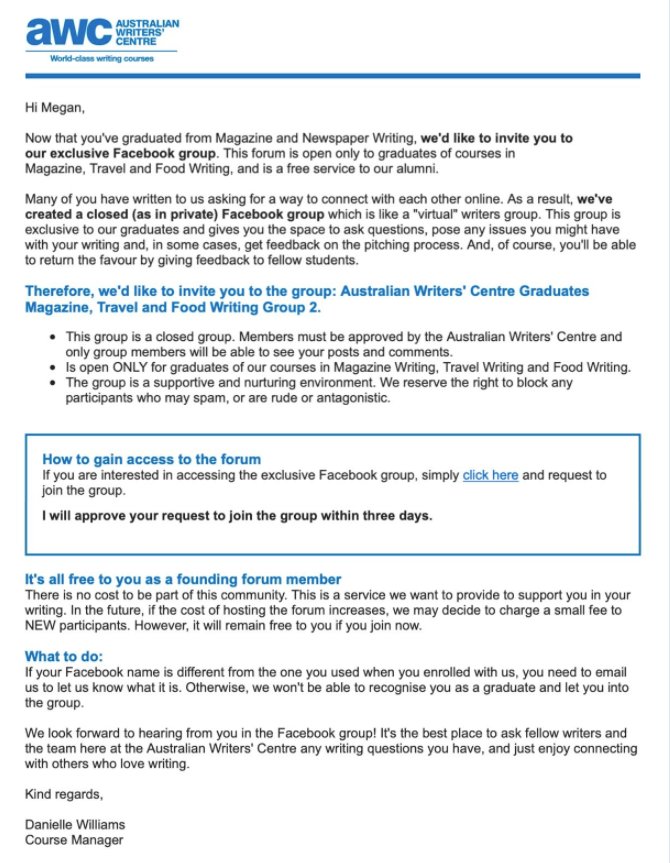
2. Welcome new users
Your welcome email is the first email your contacts receive when they subscribe to your services. The benefit of sending an automated welcome email is that it allows you to introduce your services and explain how you can help your community and audience. The following financial service email is an inspiring example of a public sector email.
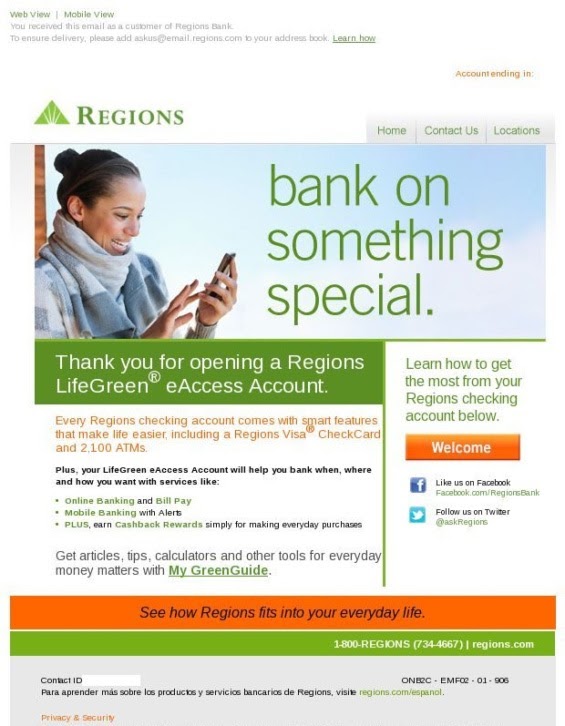
3. Thank your supporters
A thank-you email is used by public sector organizations to build a healthier long-term engagement with their audience by showing gratitude. When expressing thanks, you tend to win your audience’s trust by showing that you are invested in their experience and well-being. The following public sector email is a good example.
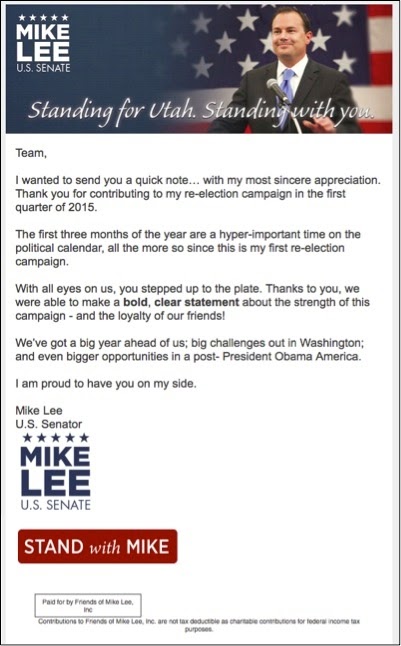
4. Send invitations
Quebec region uses public email marketing to send invitations to immigrants who have to participate in an online evaluation. Displaying clean design, short copy, and direct tone, this email delivers just the right amount of information.
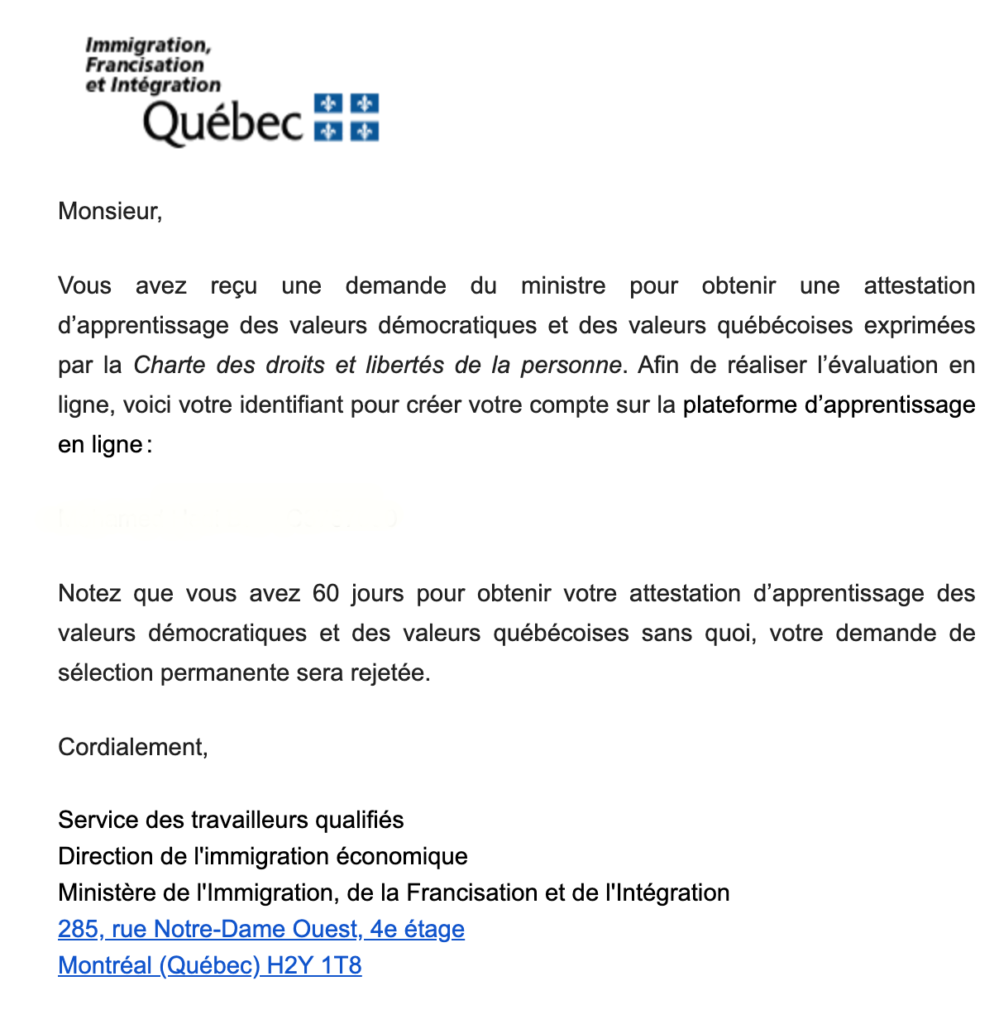
How to Set up a Public Sector Email Marketing Campaign
When you’re starting with email marketing for your public institution, you’ll have five starting tasks to accomplish.
- Create opt-in forms for your prospective subscribers.
- Upload your email list.
- Set up user roles for privacy and security
- Segment subscribers into groups.
- Send your first campaign.
I’ll go through each one in detail to help you get started and send your first public sector email campaign. First thing, register to Envoke’s free trial to send emails for your public institution.
1. Create opt-in forms for your prospective subscribers
Create an opt-in form and embed it in your website along with a strong CTA to motivate website visitors to subscribe and receive emails from you. By allowing your visitors to join your email list, you’re making your organization’s information accessible. You can create and add a subscription form to your website with zero coding skills using Envoke. Envoke provides GDPR / CASL compliant opt-in forms to help you build your public organization’s email list and stay compliant.
2. Upload your contacts email list
Collecting and sharing email addresses with your email marketing team is an essential part of email marketing for government agencies. Once you have those email addresses and enter them into your Excel document, how do you get them into your email service provider to broadcast emails? Envoke’s CSV Sync is a popular integration tool that allows you to sync any type of database, updating your list nightly through an automated export that both updates your list and removes inactive emails. This automated process saves time, and keeping your list free from inactive emails can save money, too.
3. Set up user roles for privacy and security
Do you manage a team of collaborators, or managing a remote team? You can give them quick access to your Envoke account with their individual logins to easily manage and monitor your public sector email campaigns. You can add collaborators, each with a unique set of permissions to ensure your data is in safe hands. Here is how the users’ permissions work in Envoke:
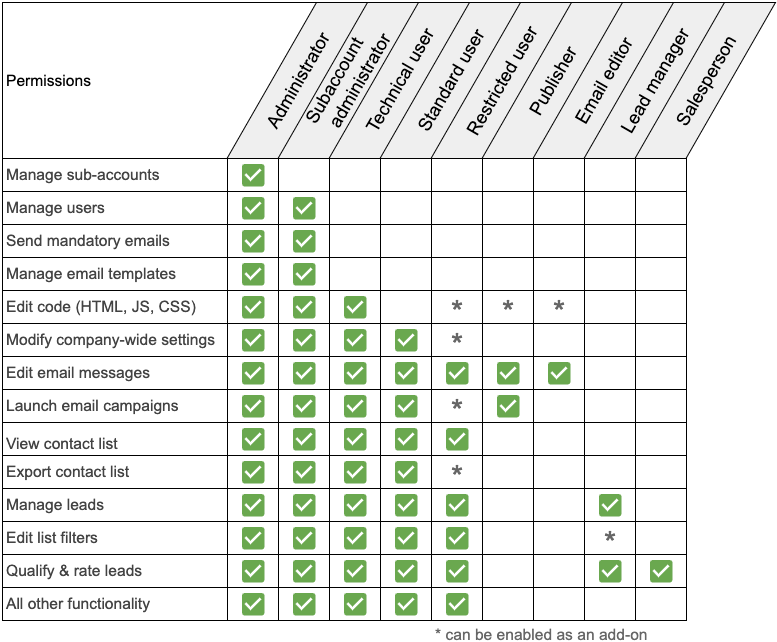
Some examples of user permission management:
- While a junior marketer or email designer can write and create email campaigns, they’re less likely to have access to user data.
- Functions like database field changes, updates, or data imports and exports are locked and only available to administrators.
- In most cases, the organization’s head of communication verifies the legal and compliance side of the email; the messages can’t be sent before getting the green light after verification.
This way, you’ll have full control over your email campaigns and your team.
4. Segment subscribers into groups
Your audiences don’t want to be bogged down with information that is irrelevant to them, and they want to engage with organizations on the platforms they frequent. This necessitates a comprehensive segmentation or personalization strategy, so your messages are tailored to the type of audience you’re addressing. Through Envoke public sector email segmentation, you can apply multiple filters to your email contact to make sure you send laser-targeted email campaigns.
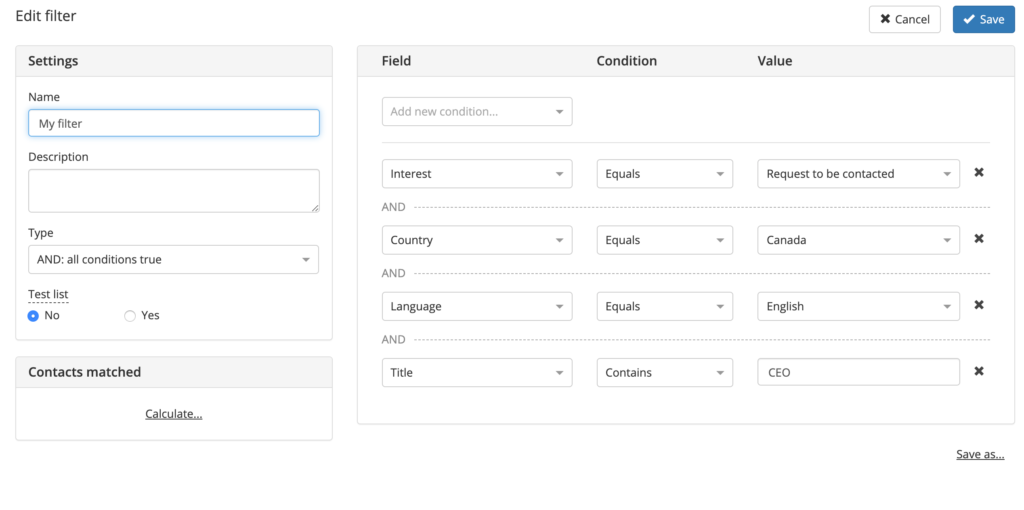
5. Send your first campaign
You don’t need any IT background or coding skills to send encouraging public sector email campaigns and you can easily design a responsive email in Envoke’s drag & drop email builder. Use Envoke’s pre-built email templates and you can drag and drop elements to design your email campaign and hit send.
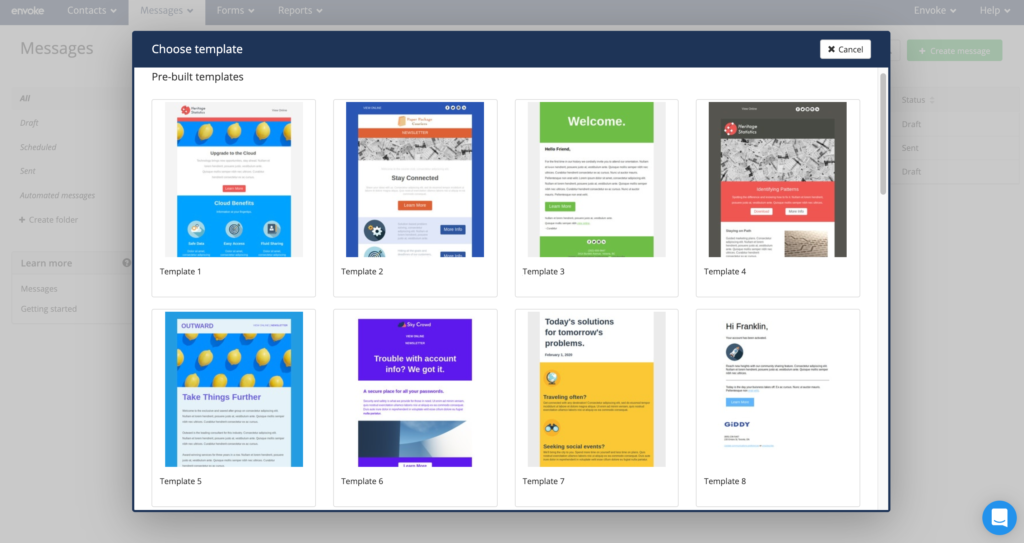
Conclusion
Managing successful public sector email marketing campaigns relies on secure email software, segmentation, and action-driven copy. Email marketing for the public sector is crucial to ensure well-informed communities and engaged citizens. Make sure you choose the right tool for the job and consider Envoke, the email marketing software purpose-built for communication.
